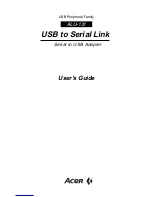
3-8
AHA-2940UW/OF and AHA-2944UW/OF User’s Guide
SCSI Device Configuration
The next four options allow you to configure certain parameters for
each SCSI device on the SCSI bus. The settings apply to all SCSI IDs,
even if they have not been assigned to a device. If you are
configuring the active device, use the SCSI Disk Utilities option,
which is explained on page 3-10, to determine which SCSI IDs are
assigned to which devices.
■
Initiate Sync Negotiation
— This option determines if the
single-chip host adapter initiates synchronous negotiation
with each SCSI device. When Initiate Sync Negotiation is set to
Yes, the single-chip host adapter initiates synchronous
negotiation with the SCSI device. When the option is set to No,
the single-chip host adapter does not initiate synchronous
negotiation. The default setting is Yes for all SCSI devices
because most SCSI devices support synchronous negotiation
and because a Yes setting may allow faster data throughput.
The single-chip host adapter always responds to synchronous
negotiation if the SCSI device initiates it; however, data is
transferred in asynchronous mode if neither the single-chip
host adapter nor the SCSI peripheral negotiates for
synchronous data transfers.
Note:
Some older SCSI-1 devices do not support
synchronous negotiation while Initiate Sync Negotiation is
set to Yes, causing the computer to operate erratically or
hang. If you use these devices, set Initiate Sync Negotiation
to No.
■
Maximum Sync Transfer Rate
— This option determines the
maximum synchronous data transfer rate that the single-chip
host adapter can support for a given device. The single-chip
host adapter supports rates up to the UltraSCSI maximum of
20.0 MB/sec. UltraSCSI host adapters attached to a Wide SCSI
bus support an effective maximum synchronous transfer rate
of 40.0 MB/sec. The default setting is the maximum rate
supported by the single-chip adapter:
– 40.0 MB/sec for Wide UltraSCSI
– 20.0 MB/sec for Narrow UltraSCSI or Wide SCSI
















































